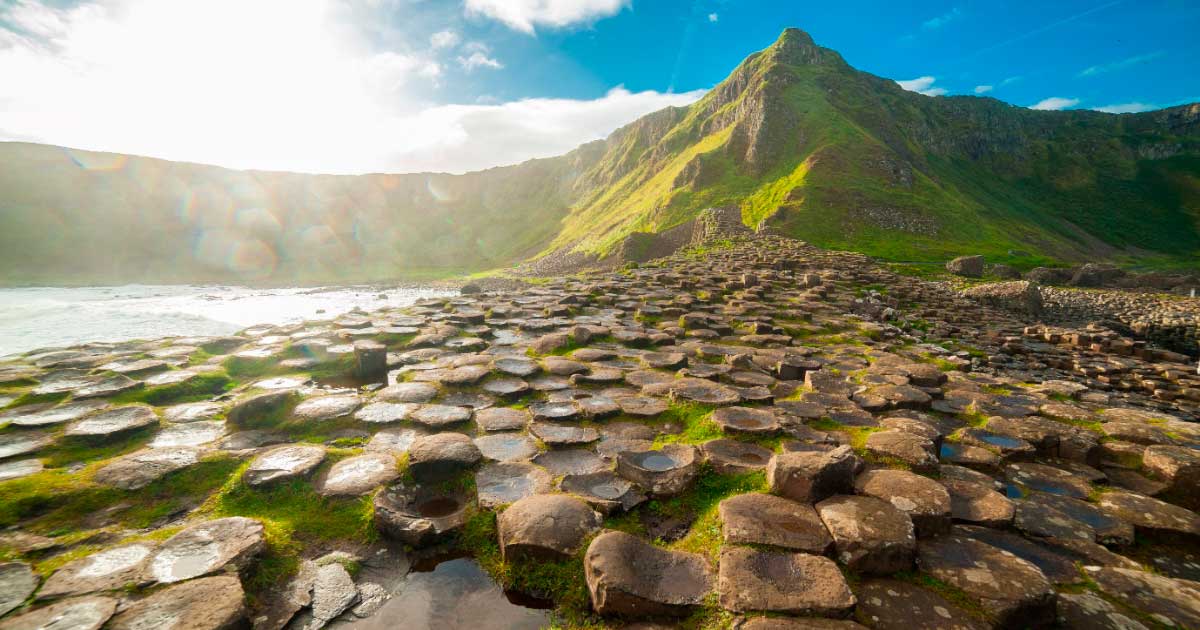Live the Legend: 8 Mythical Places That Actually Exist
When it comes to ancient mythology it can sometimes be difficult to separate fact from fiction. While most myths are obviously fictional, they often contain at least a grain of truth. The ancients had to get their inspiration from somewhere. For example, the locations of some of the most popular myths are based on or set in real places. Here we have a list of mythical places that actually exist.
1.Mount Olympus: Home of the Greek Pantheon
Anyone with even a passing knowledge of Greek mythology will be familiar with Mount Olympus. In ancient Greek religion, it served as the home of the twelve Olympians, the religion’s major deities.
Olympus was described in Homer’s Iliad as essentially being an ancient acropolis, a fortified hilltop palace complex. The palace consisted of golden gates guarded by the three Horai (goddesses of the seasons) and palaces for each of the Olympians (Zeus’s being the grandest, of course).
- Real World Locations, Where Myth Meets Reality
- Avalon: A Real Island Obscured by Legend, or Just a Legendary Island?
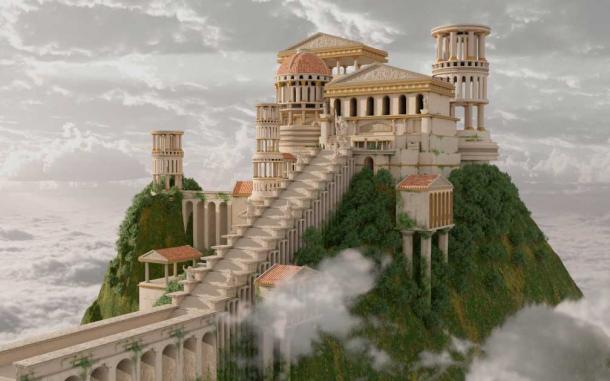
The mythical palace of the Greek gods was said to be on top of Mount Olympus in Greece (Max79im / Adobe Stock)
In the real world, Olympus is the highest mountain in Greece. The mountain has 52 peaks and deep gorges with Mytikas peak supposedly acting as the home of the gods. The area surrounding the mountain has been declared an archaeological and historical site for the preservation of its monumental and historical character, found in numerous excavation sites.
The Greeks had a tendency to point at tall mountains and call them Olympus. While Mount Olympus in Greece is usually the one most associated with the ancient gods, other peaks named Olympus can be found all over the continent. Greece alone has four peaks called Olympus; Turkey has three, and Cyprus has one.
So really, Mount Olympus could count as all eight entries on this list (and that’s not even counting the 9 Mount Olympus peaks in North America or the one on Mars)!
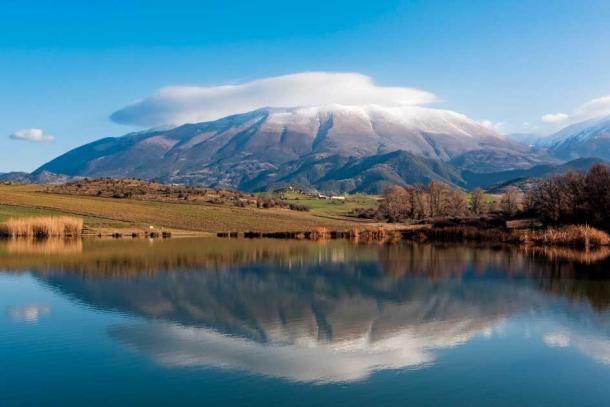
With its majestic appearance reaching into the clouds, it’s no wonder ancient Greeks placed their deities on Mount Olympus (dinosmichail / Adobe Stock)
2.Sherwood Forest: Home of Robin Hood and His Merry Men
Thanks to various Hollywood adaptations, people from all over the world today are familiar with the legend of Robin Hood. Robin Hood is a heroic outlaw in English folklore. He was a skilled archer and swordsman, and most tales surrounding him feature him stealing from the rich to give to the poor. In most modern retellings, he is depicted as being of noble birth and having fought in the Crusades.
There is still a debate over whether Robin existed, and what the origins of his legends were. The myths make constant references to real historical figures dating back to the 13th Century AD. There are legal records dating back to 1226 that mention a man named Robert Hod who had his possessions confiscated and became an outlaw. It has also been suggested that the name Robin Hood was a moniker adopted by a group of bandits.
The myths of Robin Hood usually name his base of operations as Sherwood Forest in Nottingham, England. This is most definitely a real place. It is a National Nature Reserve covering 926 acres (375 hectares) but once covered an area of over 100,000 acres (40,000 hectares). The local municipality has done an excellent job over the years of fostering the forest's connection to the popular man of legend. As such, today the area is full of Robin Hood-themed tourist attractions.
- Vikings Used Sherwood Forest Long Before It Was Known as the Hideout of Robin Hood
- Hell on Earth? Is the REAL location of the Ancient Underworld Right in Front of Us?
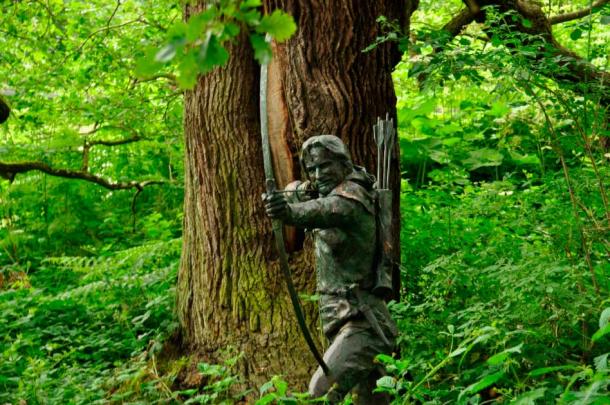
Although the existence of Robin Hood is still debated, Sherwood Forest and Nottingham Castle are mythical places you can actually visit in England. (Nilfanion / CC BY SA 4.0)
3.Troy: Site of Ancient Greece’s Greatest Battle
The fall of Troy is one of the cornerstones of Greek mythology. In Greek literature, Troy was one of the most powerful kingdoms during the Greek Heroic Age, a period when gods and monsters roamed the earth.
In mythology, the Trojan War began when the city’s prince, Paris, abducted and/or eloped with Helen. Helen was said to be ancient Greece’s greatest beauty, who was married to King Menelaus of Sparta. Menelaus convinced all the great Greek leaders, who were bound by a special oath, to attack the city of Troy.
What followed was the greatest battle of Greek mythology. The Trojan War ended when the Greeks tricked their way into the mighty city by hiding in a great wooden horse they had given to the Trojans as a supposed peace offering.
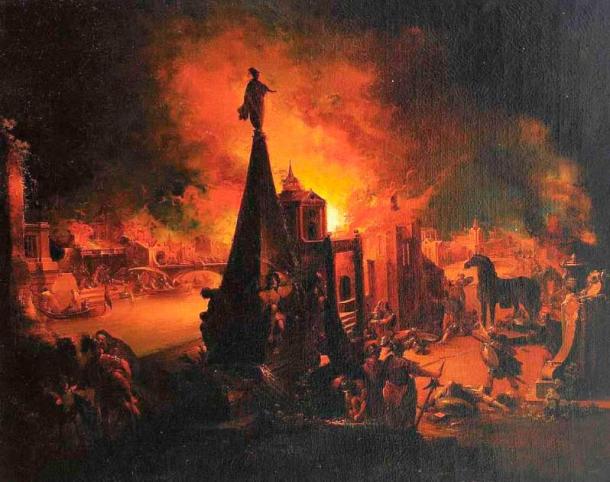
The Trojan War has been depicted in numerous works of literature and art. View of Burning Troy, 18th century painting by Johann Georg Trautmann (Public Domain)
In actual history, Troy was a real city in the region of Asia Minor which is modern-day Turkey. Until the late 19th century, Troy and the Trojan War were considered a legend. However, excavations in 1871 found ruins that closely matched depictions of the ancient city in myths.
The archaeological site at Troy consists of 9 layers dating back to the Early Bronze Age (3000-2500 BC) up to the Byzantine era (around 300 AD). It is believed the city of legend relates to one of the late Bronze Age levels.
Today, the site is easy to visit and is a popular tourist attraction as well as a UNESCO World Heritage Site. While we know for sure that Troy existed, the delineations between legend and fact are still being looked into.

For centuries, the city of Troy was believed to be a myth. However, excavations in the Canakkale province of Turkey have unearthed a multi-layered city matching Homer’s descriptions dating back to 3500 BC. (Allison Day / CC BY ND 2.0)
4.King Arthur’s Camelot
Camelot is another English legend that has seen modern popularity thanks to a glut of Hollywood adaptations. The legend of King Arthur centers on King Arthur and his Knights of the Round Table.
King Arthur was said to have been early England's greatest king, and his capital city was Camelot. He and his knights were the epitome of chivalric duty. The most popular tales feature Arthur’s betrayal at the hands of his favorite knight, Sir Lancelot, and his Queen, Guinevere.
Over the centuries, historians have attempted to find out if there is any veracity to the Arthurian legends. Was Arthur based on a real king? Was Camelot real? There have been mixed results.
In 1542, the poet John Leland stated that the residents around Cadbury Castle, a Bronze and Iron Age hillfort in Somerset, believed it to be the original Camelot. This theory was bolstered by the fact the castle is close to the River Cam and the villages of Queen Cam and West Camel. Clearly, the thinking was that these place names had to be related to Camelot.
To dig down to the truth, there were large-scale archaeological excavations during the 20th century. These showed that the area had been a settlement since the 4th millennium BC. They also showed that around 470 AD a major Brittonic ruler and his war band had moved into the area and heavily fortified it. This was the largest known fortification of its time.
After these discoveries, Cadbury Castle was widely referred to as ‘the real Camelot’. Many historians disagree, however; these spoilsports point out that the site was built too late to be the Camelot of Arthurian legend.
All hope is not lost, however. Other sites in Cornwall and Shropshire, as well as Huddersfield, have also made claims that they are the original Camelot. It seems that as long as no definitive answer is found, there are lots of options left for people hoping to visit the ‘real’ Camelot.

Cadbury Castle in Somerset has been suggested as a location for the mythical Camelot since the 1700s. This 1723 hand-colored engraving is titled "Prospect of Camalet Castle. 15 Aug 1723." (Public Domain)
5.Cyclopean Isles: Home to the Cyclops of Greek Mythology
One of the Greek leaders who played a key role in the fall of Troy was Odysseus. He was the hero who came up with the idea of using a hollow wooden horse to sneak the Greek troops into the city.
Odysseus is most famous, however, for his own set of myths that appear in Homer’s Odyssey. These myths tell the amazing story of how Odysseus and his brave men sailed back to Ithaca, Odysseus’s home kingdom. Odysseus faced many trials on his way home, but one of the most dangerous was the island of the cyclops. Early on in his journey, Odysseus and twelve of his men landed on an island where everything was bigger than usual. They come across a cave that was empty except for some simple shepherd’s belongings. They decided to slaughter one of the giant lambs on the island and enjoy a hearty meal.
When the shepherd returned, it was none other than the mighty cyclops Polyphemus, who was also a son of Neptune. Polyphemus immediately gobbled up two of Odysseus’s men before placing a boulder in the cave's doorway, trapping Odysseus and his men. Odysseus and his men waited until the cyclops was asleep and then blinded him using a sharpened log.
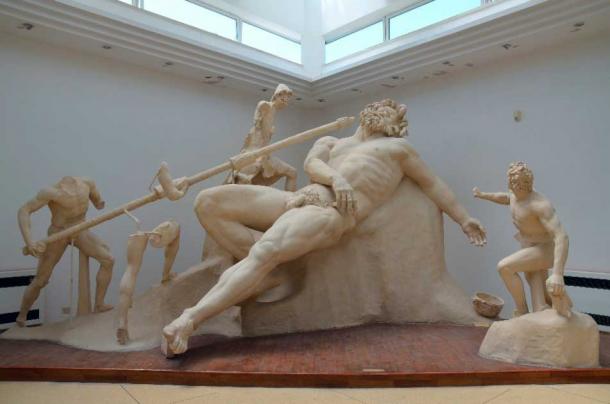
Statue depicting The Blinding of Polyphemus (Carole Raddato / CC BY SA 2.0)
In a rage, Polyphemus cleared the entrance to the cave, searching for Odysseus and his men. Realizing his attackers had fled to the sea, Polyphemus began flinging rocks into the ocean in a vain attempt to crush them.
These rocks can be seen to this day just off the eastern coast of Sicily at the Riviera of the Cyclops. This is a stretch of rocky islands along the coast that features incredible rocky cliff faces. These islands in ancient Greece were said to have been home to Polyphemus and his kin. These days the area is home to beautiful seaside towns, citrus orchards, and amazing views of Mount Etna. Luckily, the Cyclops population appears to have died out.

Panorama of the Cyclopean isles in Aci Trezza. With no cyclops in sight, it’s all sun and fun on the coast of Sicily. (Albert Izeme / CC BY NC ND 2.0)
6.El Dorado: the Mythical City of Gold
The legend of El Dorado is a tragic tale of human greed. It is also a confusing one. El Dorado was originally used by the Spanish in the 16th Century to refer to a mythical tribal chief. It was said this chief covered himself in gold and jewels and was then submerged in Lake Guatavita.
The 16th-century Spanish began to fixate on the idea of El Dorado; they couldn’t get enough gold. Through word of mouth, the legend evolved and was exaggerated from a man covered in gold, into a city, and eventually an empire covered in gold.
The Spanish conquistadors turned Columbia, Venezuela, Guyana, and Brazil upside down looking for the golden empire they had convinced themselves existed. In doing so, they wiped out countless indigenous tribes. Unsurprisingly, they never came across the mythical city.
However, this doesn’t mean there was no truth to the original legend. Historical texts do point toward an Incan tribe who lived near Lake Guatavita in modern-day Columbia. They did in fact have a ritual during which leaders would drop jewels, gold, and treasures into the lake.
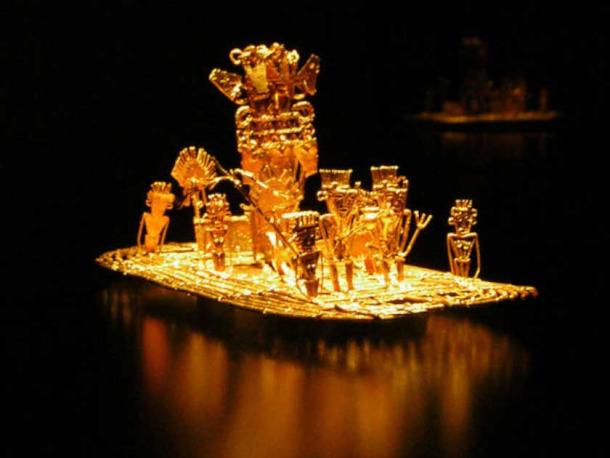
The ruler of the Musica in present-day Colombia used to cover his body in gold dust and offer treasures to the Guatavita goddess from a raft in the middle of the sacred lake. This Muisca tradition became the origin of the legend of El Dorado. Muisca raft from 1500-1200 BC in the Gold Museum, Bogotá, Colombia (World 66 / CC BY SA 1.0)
While anyone looking for the mythical city of gold is out of luck, this lake can be visited today. It is a stunningly beautiful tourist location. Sadly there is no gold to be found.
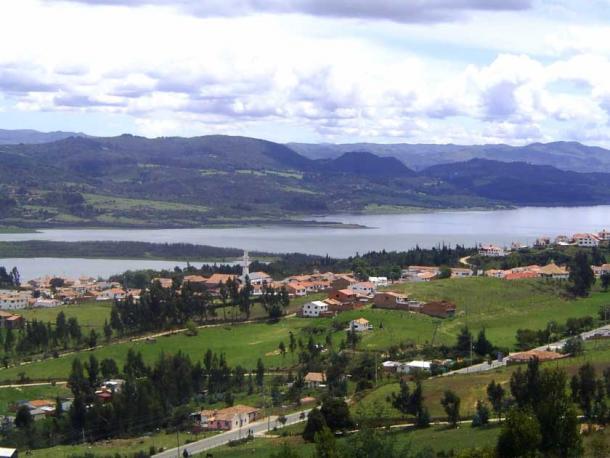
Although there is no city of gold, the countryside around Laguna Guatavita in Colombia is a relaxing place to visit and explore (Wladimir Valdes / CC BY SA 2.0)
7.Matsue: The Closed Entrance to the Underworld
Today, Japan is considered to be a Buddhist country, but Japan has a wealth of traditions and mythology that pre-date Buddhist teachings. One of these is the story of Yomi No Kune, part of an early Asian creation myth.
According to this myth, there were two early gods who were responsible for all creation. They were Izanagi and his sister-wife Izanami. According to the myth, Izanami died giving birth to the element fire. Izanagi, distraught in his grief, went on a journey to the underworld to retrieve her soul.
He discovered a dark and gloomy place where souls who were trapped in their bodies reside. Izanagi found his wife, but was told that during their journey back to the surface he must not look at her. Unfortunately, just as he approached the surface, he caught a glimpse of his rotting sister-bride behind him.
Izanami was outraged and sent demons chasing after her brother, trying to trap him in the underworld. Izanagi managed to escape and seal the entrance to the underworld, called Yomi No Kune, with a giant rock.
The legend finishes with the enraged Izanami promising to drag 1,000 souls into the underworld every day. Izanagi countered by promising to create 1,005 new ones.

18th century painting of the Shinto deities Izanagi and Izanami (Public Domain)
The rock Izanagi placed to block Yomi No Kune is said to still exist to this day. It can be found in the Matsue area of Japan. The entrance to Yomi No Kune is called Yomotsu Hirasaka, and the boulder blocking it can be found behind the Iya shrine in Matsue. No one knows for sure which boulder in the area blocks the entrance, which is probably for the best. Visitors can also visit Izanami’s grave and shrine.

Yomotsu Hirasaka is the slope that leads to Yomi, the Japanese underworld. (ChiefHira / CC BY SA 3.0)
8.The Giant’s Causeway: Built by Anger, Destroyed by Fear
The Giant’s Causeway can be found in County Antrim in Northern Ireland. It is made up of over 40,000 interlocking basalt columns which, according to scientists, were the result of an ancient volcanic eruption. Collectively, the columns takes the appearance of steps leading from the cliff foot to under the waves.
Science is boring though. Local legends state that the basalt columns are the remnants of a causeway built by an ancient giant. The giant, Fionn mac Cumhaill, was challenged to a fight by a rival Scottish giant, Benandonner.
Eager to fight, Fionn built the causeway to cross the North Channel that separates Ireland and Scotland. Fionn then ended up hiding from Benandonner, after realizing his rival was much bigger than him. Fionn’s wife, Sadhbh, then disguised him as a baby and tucked him into a cradle.
When Benandonner saw this gigantic man-baby he panicked, thinking the child’s father must be truly gigantic. He fled across the Giant’s Causeway back to Scotland, destroying it as he went.
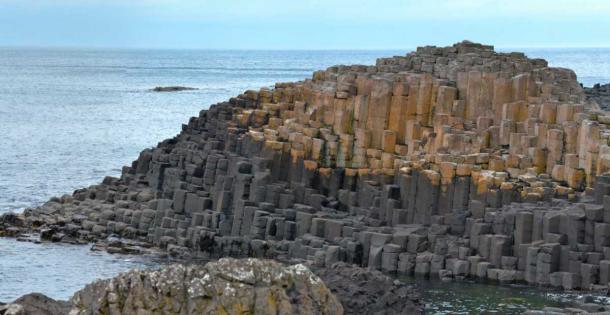
According to myth, the Giant’s Causeway in Northern Ireland was created by the giant Benandonner destroying his steps as he fled back to Scotland (Hans Hilliwaert / CC BY NC ND 2.0)
Conclusion
Many places in the world have inspired myths. Visiting these places gives us a look into the lives and beliefs of those who came before us. It may be a little disappointing to find them devoid of the kinds of magical beasts and treasures our ancestors believed they housed, but these places have lost none of their magic.
Today, most of these places are UNESCO World Heritage Sites or enjoy similar levels of protection. People for generations will continue to be able to read these myths and visit these amazing places, sharing in their magic. Maybe one day our ancestors will look at the tales we tell today and search for our inspiration.
Top Image: Visiting mythical places, like the Giant’s Causeway in Northern Ireland pictured, helps us connect with our past, as well as nature. Source: drimafilm / Adobe Stock
By Robbie Mitchell
References
Bonnefoy, Y. 1993. Asian Mythologies. University of Chicago Press. Available at: https://books.google.ie/books?id=r4I-FsZCzJEC&dq=mythical+entrances+to+yomi&source=gbs_navlinks_s
Watson, P. 2000. The Giant's Causeway and the North Antrim Coast. O'Brien Press.
Brown, C. S. 1966. Odysseus and Polyphemus: The Name and the Curse. Duke University Press. Available at: https://www.jstor.org/stable/1770048
Solly, M. May 17, 2022. The Many Myths of the Man Who ‘Discovered’ and Nearly Destroyed Troy. Smithsonian Magazine. Available at: https://www.smithsonianmag.com/smart-news/the-many-myths-of-the-man-who-discoveredand-nearly-destroyedtroy-180980102/


















